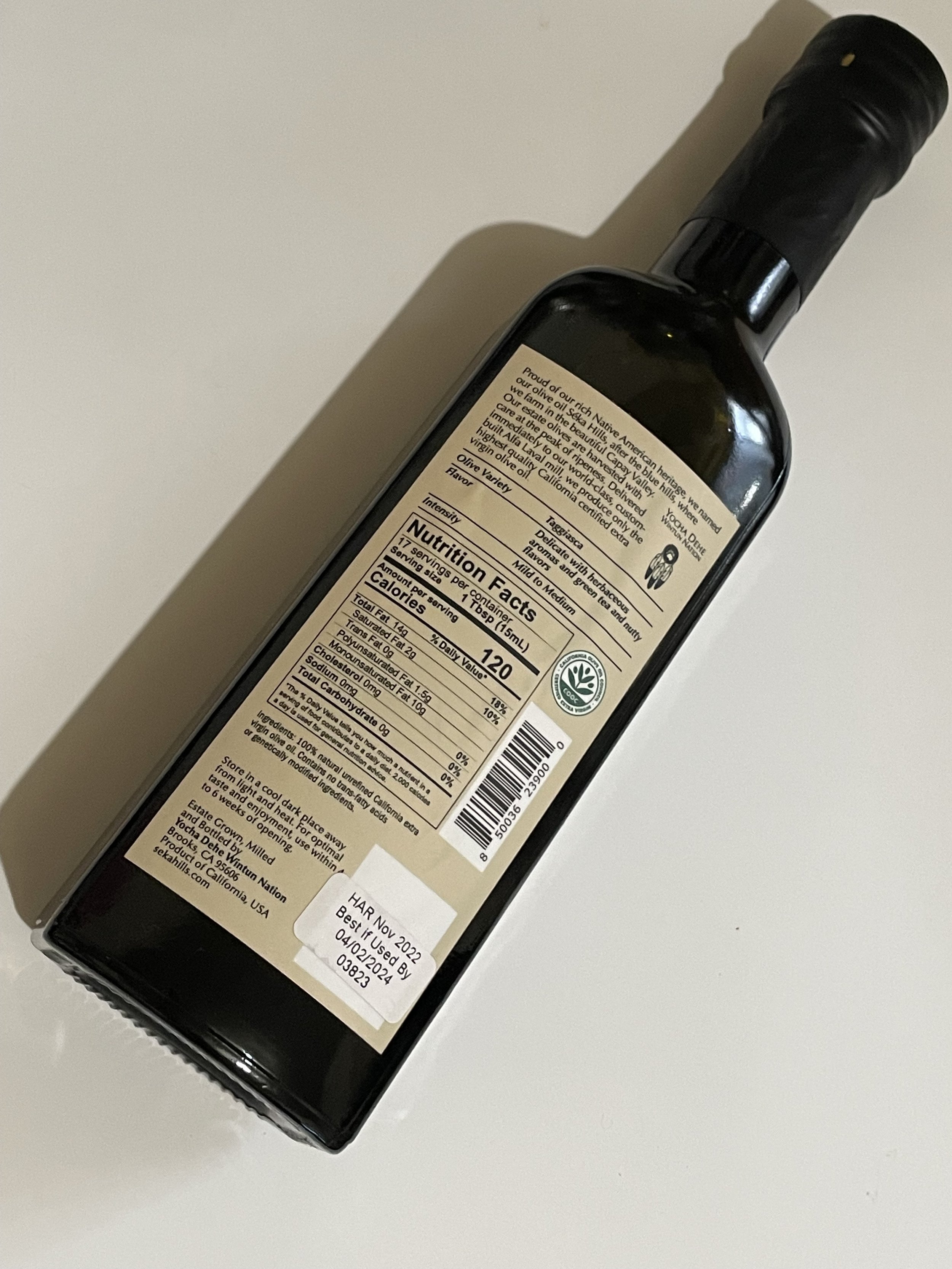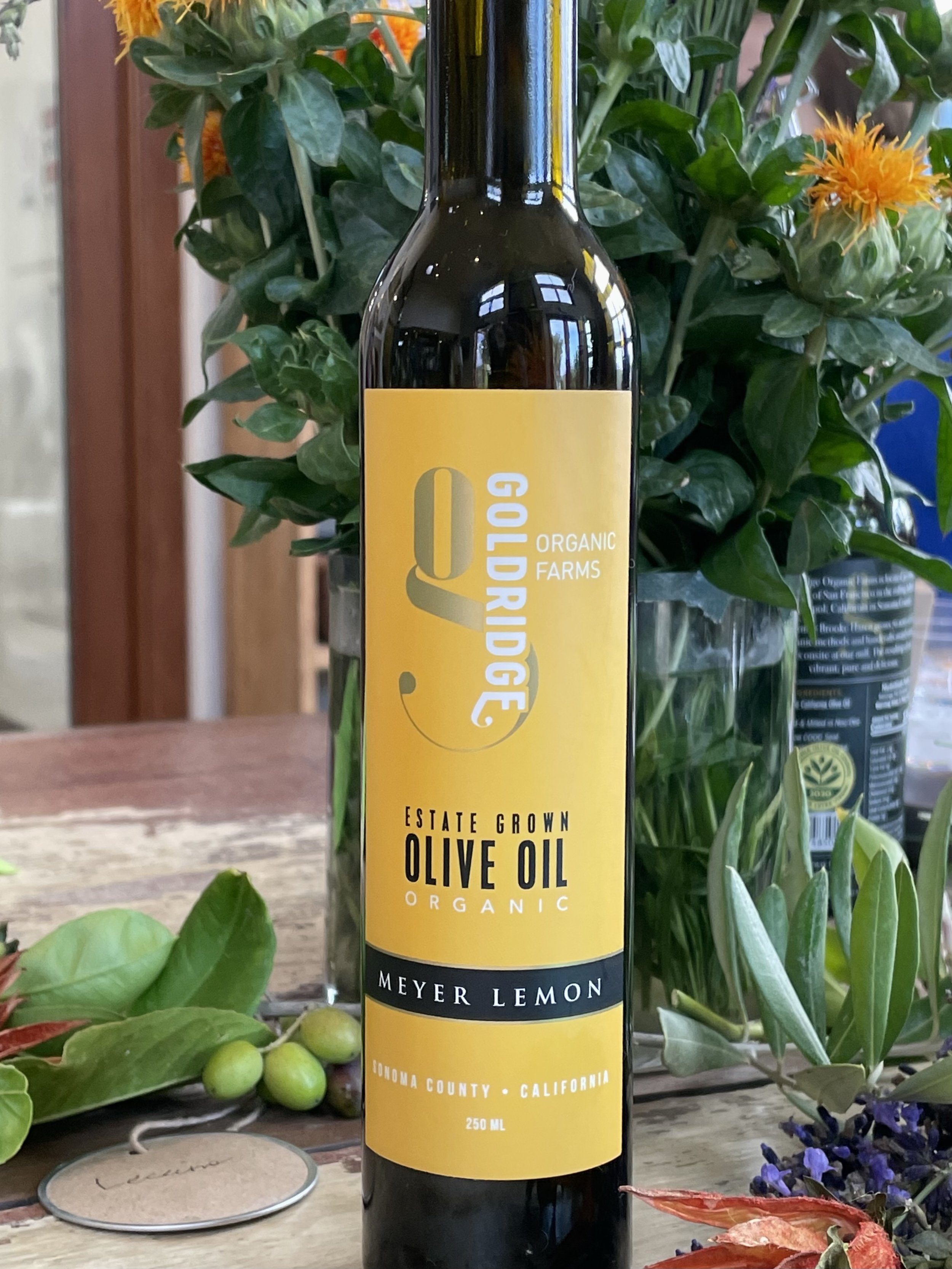A Basic Olive Oil Glossary: How to Make Sense of Olive Oil Lingo
Olive oil is an incredible ingredient, and the cornerstone of the famous Mediterranean diet. Exquisite olive oil elevates everything it touches. Salads, grilled veggies, meat and seafood, soups, stews, pasta, and risotto go from good to extraordinary when anointed with flavorful EVOO.
Like many things, the world of olive oil comes with its own language. It can be a little overwhelming to all of us, from newbies to serious foodies. What does extra virgin mean, anyway? What about claims like cold pressed and monocultivar, and how do these things impact what’s in the bottle? Here’s a glossary to break down some of the most common olive oil terminology, so you can speak the language of olive oil with the fluent ease of a pro.
Pressed
A long time ago, olives were quite literally pressed to make oil. Although the term “pressed” and even “first pressed” continue, they are mostly no longer accurate. Olives are not pressed to make olive oil, they are milled and the oil is extracted.
Extra virgin
The Olive Oil Workshop founder Alexis Kerner
It makes sense to start here. Expert olive oil taster and founder of The Olive Oil Workshop Alexis Kerner says, “The very first thing I look for on the label is the words Extra Virgin Olive Oil.” Extra virgin is the top tier of olive oil. “Extra virgin has aromas of fresh fruit and has no flaws,” explains Kerner. “It is the highest quality.”
To be considered extra virgin, the oil must be extracted mechanically from olives, have a free acidity of less than 0.8%, and be free of defects, according to a tasting panel. Extra virgin olive oil is not chemically altered in any way. Even though it is the highest grade, the quality, aroma, flavor, color, and price can vary significantly from one bottle to another.
Other styles: Virgin oil is slightly lower in quality than extra virgin. Olive oils labeled “pure olive oil, “light olive oil,” or simply “olive oil” are usually refined olive oils – which means they go through a manufacturing process to remove unwanted flavors and aromas. The result is a mild, bland product, lacking the flavor complexity and health benefits of extra virgin olive oil. They’re not necessarily bad, but they are different.
Early harvest
This refers to olives harvested first, at the very start of the season. The less ripe olives give oil a more peppery and bitter taste—and oftentimes, a higher level of antioxidants. Harvest might happen early as a matter of choice, or it might happen as a necessity, in order to avoid the frost.
Fresh
Harvest date
Freshness is one of the most important attributes of olive oil. Like juice, olive oil slowly degrades over time. Corto Olive’s Master Miller David Garci-Aguirre knows that freshness and flavor are closely linked. “Superior quality, fresh olive oil tastes intensely fruity and crisp, and should remind you of fresh things like herbs, fresh cut grass, fruits and plants you might find in your garden,” he explains. “When you taste fresh oil, mouthfeel is important. Your mouth should feel totally clean—not oily or greasy at all.”
Olio nuovo
Fettunta
Speaking of freshness, olio nuovo, olio novello or “new oil” refers to olive oil that has been recently harvested and extracted. It is a seasonal product that is often robust and full of flavor—a treat! You can find it in the fall or winter from Northern Hemisphere growers. It is typically not filtered. In Tuscany this oil is often enjoyed with a special kind of garlic bread called fettunta which is made by grilling a piece of bread scraping it with raw garlic and dousing it liberally in the fresh oil.
Filtered
Filtration is a process used to remove any moisture and impurities remaining in an oil. A filtered oil will be clear. An unfiltered oil may be cloudy, most likely from moisture. The decision to filter an oil or not is a preference of the producer. Remarkable oils may be either filtered or unfiltered.
Unfiltered extra virgin olive oils may stand out on the shelf, as they seem thick and are often vibrant in color. It is extra essential that unfiltered oils be enjoyed while fresh. “Over time the particulates will start to react with the oil and can ferment and degrade the oil quicker than a filtered oil,” Kerner says. “I always recommend that the consumer knows the oil is fresh and doesn’t buy one that could be sitting on a shelf for months.”
Monocultivar
Taggiasca oil from Seka Hills
Sometimes called monovarietal or monocultivar olive oils, these are made with only one olive variety, or cultivar, to produce an oil with certain characteristics. For example, Monini makes a monocultivar with only the “ Frantoiana ” or frantoio olive, and Castillo de Canena makes both arbequina and picual monocultivars. Both brands make excellent blends, too. When producers combine multiple varieties, that’s a blend.
Gold Ridge infused olive oil
Infused, co-crushed or co-milled
Infused olive oil has taken on the flavors of another ingredient—anything from fresh herbs to citrus to chili peppers. You can make this at home or buy it already bottled. A note: any time a flavor has been added, an oil can no longer be classified as extra virgin as per international standards. Flavors can be used to mask lesser quality oil, but this is not always the case. Co-crushed or co-milled means the flavoring is added at the same time as the oil is being extracted from the olives.
AGRUMATO®
Agrumato® Mandarino
You may see the name “agrumato” used to describe citrus or flavored olive oils or to describe a process of milling olives and citrus together, with claims that it is the word for an ancient method or technique. This is not true. AGRUMATO® is a neologism that was created by Francesco G. Maria Ricci in the 1980s, and is a registered trademark used solely as the brand for products made by the Ricci family of Lanciano. Other olive oil producers do not have a legal right to use it, though some may be challenging this and the trademark is not a settled matter in Australia.







